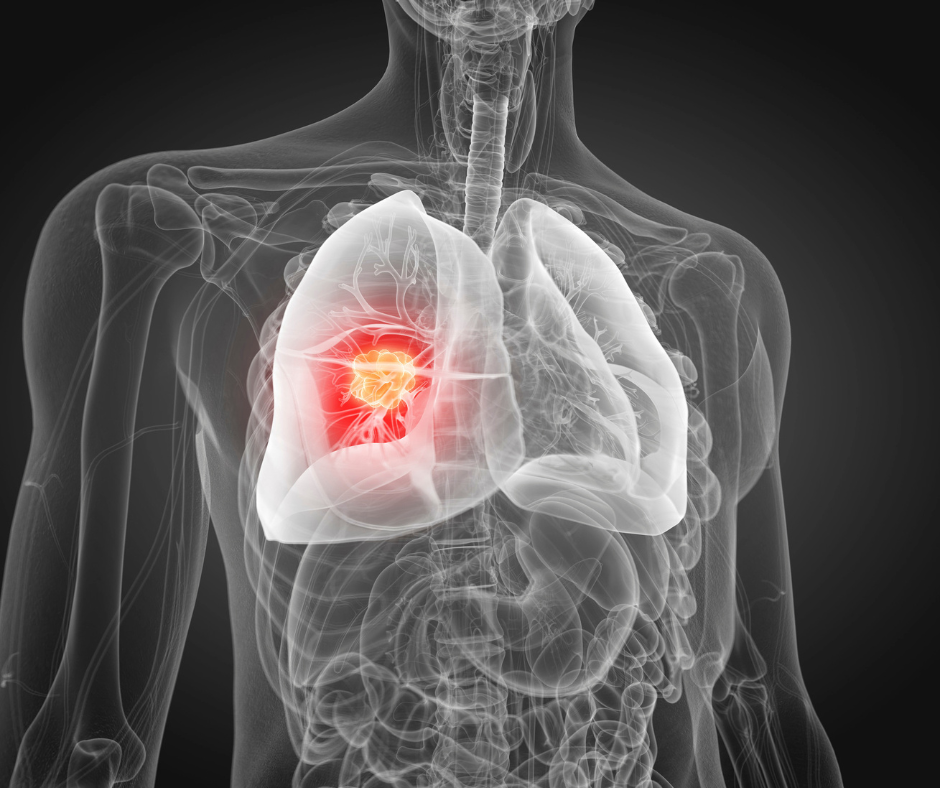
Types of lung cancer
Lung cancer is not a single disease. There are several different types of lung cancer, which differ in terms of where and in which type cells in the lungs the cancer begins, the way the cells appear under a microscope and the way and speed at which the cancer progresses and spreads.
Non-small cell lung cancer (NSCLC)
This is the most common type of lung cancer. Approximately 80% of lung cancer diagnoses in Canada are NSCLC.
It usually spreads more slowly than other lung cancers. There are three major types of non-small cell lung cancer: adenocarcinoma, squamous cell carcinoma and large cell carcinoma.
Adenocarcinoma
Adenocarcinoma is a type of NSCLC cancer that starts in glandular epithelial cells (cells that secrete mucous, digestive juices or other fluids). Many organs, not just lungs, have these types of cells and adenocarcinoma can develop in any of them, including in the breast, prostate, colon, rectum, pancreas, stomach or esophagus. In the lungs, it usually begins in the outer edges of the lungs and the lining of the bronchi.
Adenocarcinoma is the most common type of NSCLC and the most common type of lung cancer in people who have never smoked tobacco.
Adenocarcinoma grows slowly and is more likely than other types of NSCLC to be found before it has spread to other parts of the body.
Squamous cell carcinoma
Squamous cell carcinoma (or squamous cell lung cancer) is a type of NSCLC that occurs in the squamous cells lining the airways. It often occurs in the central part of the lung or the main airway, such as the left or right bronchus.
SCC is the second-most common type of NSCLC and is more strongly associated with smoking than any other type of NSCLC.
Squamous cell carcinomas may cause some symptoms, such as coughing up blood, at an earlier stage than adenocarcinomas.
Large cell carcinoma
Large cell carcinoma cells do not look like adenocarcinoma cells or squamous cell carcinoma cells (undifferentiated). This type of NSCLC can be found anywhere in the lungs and typically grows and spreads quickly.
Small cell lung cancer (SCLC)
SCLC or small cell carcinoma usually begins in the bronchi, the major airways in the center of the chest that lead to the lungs.
SCLC is a less common type of lung cancer. It spreads faster than non-small-cell lung cancer and tends to metastasize (spread to other sites in the body) more quickly. SCLC is named for the size of cancer cells, which can only be seen under a microscope.
The two types of SCLC are small cell carcinoma (or oat cell carcinoma) or combined small cell carcinoma, in which the tumor also exhibits squamous or glandular cells.
There are also other types of lung cancer that are much more rare than NSCLC or SCLC.
This section was made possible by an unrestricted educational grant from Merck Canada, Sanofi Canada and Astra Zeneca Canada.

Are you eligible for lung cancer screening?
Ontario, BC, Alberta, Nova Scotia and Quebec offer low-dose CT screening for those at high risk of lung cancer. Speak to your family doctor or nurse practitioner if you:
- are between the ages of 55 and 74, and
- currently smoke or a former smoker who quit within the last 15 years, and
- have a smoking history of at least 20 years (or 15 years in Alberta).
